The initial volume of the Film Noir: The Dark Side of Cinema collection of Blu-rays has been brought back into print by Kino, giving those who had missed out the first time a chance to get reacquainted with these 5 noir gems from the MGM/UA vaults. Deception and murder (Witness to Murder), gangsters and foreign espionage (A Bullet for Joey), robberies gone wrong and hostage taking (He Ran All the Way), rural hideouts and smoldering passions (Storm Fear) and hidden loot and prison breaks (Big House, U.S.A.) make up the heady ingredients of these noirs brought back from the out-of-print dead.
The Production: 4/5
Witness to Murder (1954; 4 out of 5)
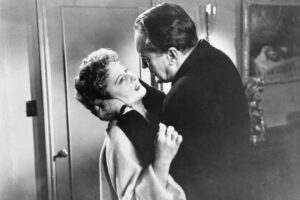
On a sleepless night in Los Angeles, Cheryl Draper (Barbara Stanwyck) witnesses a young woman being strangled to death in the apartment across the street from hers. However, when the police arrive, they don’t find the body in the apartment – which belongs to Albert Richter (George Sanders) – and leave thinking that Cheryl had a nightmare. The problem is that it’s no nightmare, and Albert knows that Cheryl witnessed the murder and attempts to discredit her by convincing the police that she’s insane. However, Lt. Larry Matthews (Gary Merrill) is also suspicious of Albert, but can he – or Cheryl – prevent him from getting away from murder?
Barbara Stanwyck was one of the most notable faces of film noir going back to the career high point performance – and there were quite a few of them – in Double Indemnity (1944), and Witness to Murder also features her in another terrific performance. Directed by Roy Rowland and scripted by Chester Erskine, the story moves along at a brisk pace and tension is apparent right from the start; once the opening murder occurs, the suspense and tension doesn’t let up until the final frame. The movie also boasts the striking camerawork of the legendary John Alton, who makes the apartments, police stations and sanitoriums of Los Angeles depicted in this story seethe with dripping tension and menace throughout the film. The only real demerit here – other than the fact that Alfred Hitchcock’s Rear Window opened very shortly after this movie and overshadowed the solid work here – is that the plot itself does toy with predictability to the point where some situations come off as more shrill than convincing. However, that can be forgiven since Stanwyck and George Sanders are so good here, including some solid support from Gary Merrill as well. Again, while not as well known, Witness to Murder is a tensely made little noir that features two powerful performances, that it deserves a second look.
He Ran All the Way (1951; 4 out of 5)
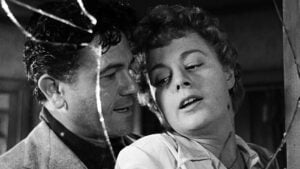
Small time crook Nick Robey (John Garfield) is barely scraping by when his partner in crime Al Molin (Norman Lloyd) enlists him in a daring payroll robbery. Unfortunately for him, the heist goes sideways when – despite netting $10,000 – Al and a police officer end up killed and Nick goes on the run. He meets lonely bakery worker Peg Dobbs (Shelley Winters) while hiding out in the public pool and is taken to her family’s apartment where he repays her kindness by taking her and her family hostage. As the hours tick by, Nick’s increasing paranoia may just end up being his downfall!
Known for some the sheer talent involved who would soon end up on Hollywood’s blacklist, He Ran All the Way is an efficient little film noir that’s worth rediscovering. Director John Berry, along with screenwriters Dalton Trumbo and Hugo Butler – the latter two adapting from Sam Ross’ novel – fashion a traditional heist gone wrong scenario and execute with great precision and style; during the film’s initial run, all three would be uncredited due to the blacklist, although their credits would be restored years later (Berry’s and Butler’s credits are intact here on the opening credits, but Trumbo front Guy Endore’s still remains on this print). Though the plot itself is a bit routine, the film is boosted by the cinematography of the legendary James Wong Howe and equally notable composer Franz Waxman, both of whom contributed to the tense atmosphere. However, the film’s major plus is the performance of John Garfield, who – in his last film before being blacklisted and passing away a year after this film’s release at the age of 39 – reminded audiences why he became successful with his brooding, more wounded animal than cold-hearted murderer turn here as Nick; Shelley Winters, Selena Royle, Norman Lloyd, Gladys George and Wallace Ford are solid as well (Royle and Lloyd were also victims of the blacklist, though Lloyd would find relief later in the decade thanks to Alfred Hitchcock, who made him an associate producer of his TV series Alfred Hitchcock Presents). Although the plot itself doesn’t offer up anything much new to the noir genre, He Ran All the Way has some sheer talent both in front of and behind the camera that makes it a hidden little gem worth checking out.
Storm Fear (1955; 4 out of 5)
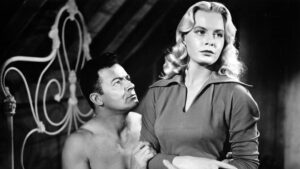
At their remote farmhouse somewhere in New England, Fred Blake (Dan Duryea), his wife Elizabeth (Jean Wallace) and their son David (David Stollery) have unexpected company in the form of Fred’s brother Charlie (Cornel Wilde), who arrives after a botched bank robbery left him badly wounded. With a snowstorm penning them all in, time passes while Charlie finds himself rekindling his love for Elizabeth while Charlie’s accomplices – Benjie (Steven Hill) and moll Edna Rogers (Lee Grant) – are desperate to get out. While the snow is falling, the tension heats up when forces outside and within threaten Charlie’s recouperation and attempts to escape, leading to a surprising climax in the snow.
For his first directorial effort, Cornel Wilde showed with Storm Fear he could handle both roles of director and actor with relative ease. Adapted from the novel by Clinton Seeley, screenwriter Horton Foote (his first feature film credit in that capacity) builds tension and executes the plot with great ease as well. The film also has the virtue of the work of cinematographer Joseph LaShelle, who makes the snow-covered mountains of Sun Valley, Idaho (filling in for the mountains of New England – likely either Vermont or New Hampshire – here) feel claustrophobic despite their grandeur. Best of all, Wilde allows his co-stars an equal opportunity to shine here, as Dan Duryea, Jean Wallace, Lee Grant, Dennis Weaver, David Stollery and Steven Hill (in his film debut) each give solid performances. In short, Storm Fear is a hidden gem of a noir that established a new facet in the career of Cornel Wilde as actor-producer-director, one which he would take full advantage of in later films like The Naked Prey (1966) and Beach Red (1967) to great effect.
A Bullet for Joey (1955; 3.25 out of 5)
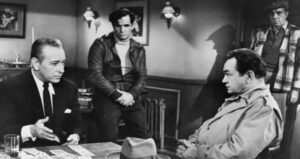
In Montreal, a cell of communist agents working in Canada wants to kidnap nuclear physicist Dr. Carl Macklin for high-tech secrets he possesses. To do that, they enlist the help of mobster Joe Victor (George Raft), and deaths shortly follow. Hot on their trail after a slow start, Royal Canadian Mounted Police Inspector Raoul Leduc (Edward G. Robinson) tries to prevent the Cold War from getting hot in his country, but it might just take both him and Joe coming face to face on the enemy cargo ship to bring this case to a close!
While Edward G. Robinson and George Raft are two of the best known actors to play gangsters on the screen, A Bullet for Joey ranks among the lesser efforts for both actors. While the film does take advantage of the Cold War tensions within the plot, the script by Daniel Mainwaring (credited as Geoffrey Homes) and A.I. Bezzerides feels too laid back than actually tense in its pacing. Director Lewis Allen – who was no stranger to film noir with his films So Evil My Love (1948) and Suddenly (1954) – does his best to deliver a coherent and compelling thriller, but the fireworks don’t really happen until the climactic final act aboard the cargo ship. Leading men Edward G. Robinson and George Raft are decent in their parts, but it’s supporting players Peter van Eyck, Audrey Totter and George Dolenz who have the lion’s share of the meaty parts and moments here. Overall, A Bullet for Joey falls short of capitalizing on the possibilities and moments offered by the story, despite the presence of two of cinema’s most notable tough guys; it’s technically well made, but it could’ve been better.
Big House, U.S.A. (1955; 4 out of 5)
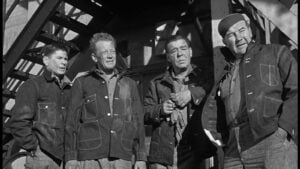
In a maximum-security prison on Cascabel Island, recently convicted extortionist Gerry Barker (Ralph Meeker) – whose attempt at collecting a $200,000 ransom for a rich man’s son went horribly wrong – gains the trust of four of his fellow convicts when they plan a daring prison break. When the breakout occurs, Gerry, bank robber Albert “Rollo” Lamar (Broderick Crawford), smuggler Leonard “Alamo” Smith (Lon Chaney Jr.), and murderers William “Machine Gun” Mason (William Talman) and Benny Kelly (Charles Bronson) exploit their ill-gotten freedom by searching for the ransom money hidden in Colorado’s Royal Gorge National Park. However, FBI agent James Madden (Reed Hadley) – the man who put Gerry in prison – is hot on their tail, and conflicting loyalties and mounting tension cause the inmates to turn on each other, meaning that the money might not enjoyed by these ruthless five convicts alive!
Among prison break dramas, Big House, U.S.A. is lean, mean and downright effective. Under the taut direction of Howard W. Koch, John C. Higgins’ script wastes no time in putting us right in the action, setting up its premise with great skill. While the film does boast the presence of veteran production designer Charles D. Hall (in one of his last credits), the real star of the behind-the-camera is veteran cinematographer Gordon Avil, whose brilliant location camerawork of Colorado’s Royal Gorge National Park and nearby Canon City makes the majestic park a character unto itself. However, the film’s main asset – outside of Avil’s striking photography – is the fact that the film is well cast from top to bottom, with Ralph Meeker, Broderick Crawford, William Talman, Lon Chaney Jr. and Charles Bronson convincing as the quintet who are constantly at each other’s throats even after the breakout; Reed Hadley, Felicia Farr, Roy Roberts, Willis Bouchey and Robert Bray are also effective in their supporting roles as well. While it’s no masterpiece of the noir, Big House, U.S.A. nonetheless still generates effective thrills and tension in its economical running time; to put it shortly, it’s a B picture that delivers the goods.
Video: 4.5/5
3D Rating: NA
He Ran All the Way is presented in its original 1:33:1 aspect ratio, Storm Fear is presented in its original 1:85:1 aspect ratio, and Witness to Murder, A Bullet for Joey and Big House, U.S.A. are presented in 1:75:1 aspect ratios (Witness and Big House are in the original aspect ratio, while Joey is showcased in this aspect ratio, although its intended ratio is 1:85:1); all five films’ HD transfers appear to be the same ones used from their initial Blu-ray releases by Kino. Film grain, fine details and gray scale on each film appears to be faithfully presented with only minor cases and recurrences of scratches, tears, dirt and dust present. Barring another re-release of each film with new HD transfers in the future, this release is still likely the best each film will ever look on home video.
Audio: 4.5/5
All five films’ mono soundtracks are presented on DTS-HD Master Audio tracks for this release. For each film, dialogue, sound mix and music score (Herschel Burke Gilbert for Witness to Murder, Franz Waxman for He Ran All the Way, Elmer Bernstein for Storm Fear, Harry Sukman for A Bullet for Joey & Paul Dunlap for Big House, U.S.A.) all appear to have a solid and faithful presentation with only minimal cases of fluttering, crackling, popping, distortion and hiss present. Again, this is likely the best each film will ever sound on home video.
Special Features: 1.5/5
Witness to Murder
Theatrical Trailer (2:08)
He Ran All the Way
Theatrical Trailer (2:13)
Bonus KLSC Trailers – A Bullet for Joey & Witness to Murder
Storm Fear
Bonus KLSC Trailers – He Ran All the Way, Witness to Murder & A Bullet for Joey
A Bullet for Joey
Theatrical Trailer (2:07)
Bonus KLSC Trailers – He Ran All the Way & Witness to Murder
Big House, U.S.A.
Bonus KLSC Trailers – He Ran All the Way, A Bullet for Joey & Witness to Murder
Overall: 3.5/5
Kino has done a fine job of bringing Volume I of Film Noir: The Dark Side of Cinema back into print, with solid HD transfers carried over from the initial run. Highly recommended, especially if you missed getting the set – or any of the films individually – the first time.
Mychal has been on the Home Theater Forum’s reviewing staff since 2018, with reviews numbering close to 300. During this time, he has also been working as an assistant manager at The Cotton Patch – his family’s fabric and quilting supplies business in Keizer, Oregon. When not working at reviewing movies or working at the family business, he enjoys exploring the Oregon Coast, playing video games and watching baseball in addition to his expansive collection of movies on DVD, Blu-ray and UHD, totalling over 3,000 movies.
Post Disclaimer
Some of our content may contain marketing links, which means we will receive a commission for purchases made via those links. In our editorial content, these affiliate links appear automatically, and our editorial teams are not influenced by our affiliate partnerships. We work with several providers (currently Skimlinks and Amazon) to manage our affiliate relationships. You can find out more about their services by visiting their sites.

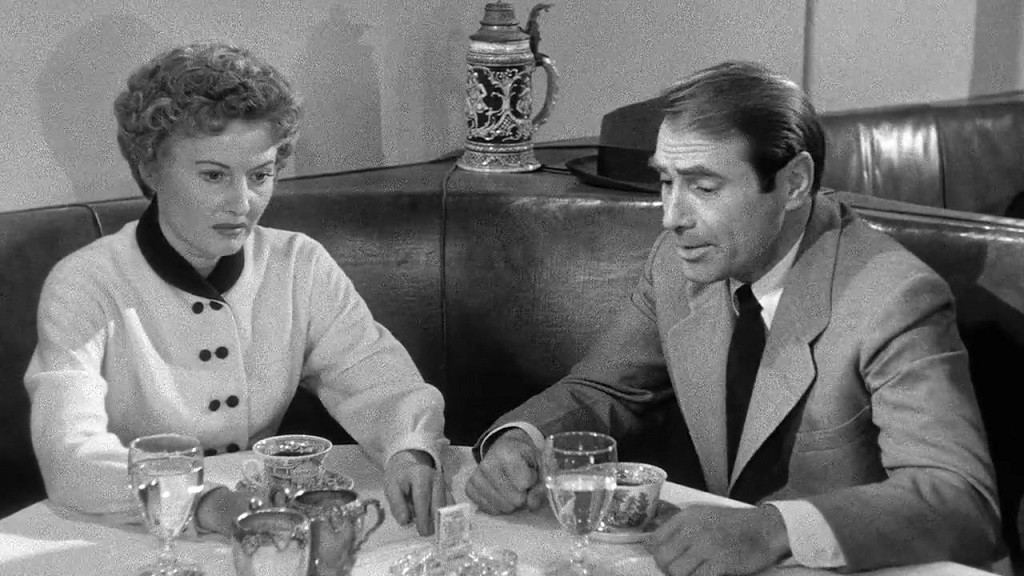
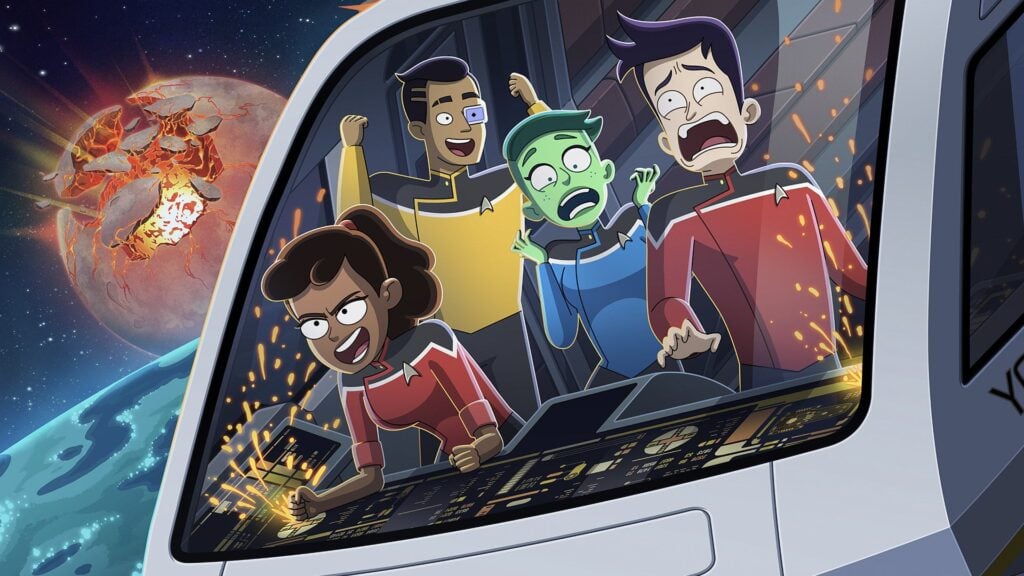
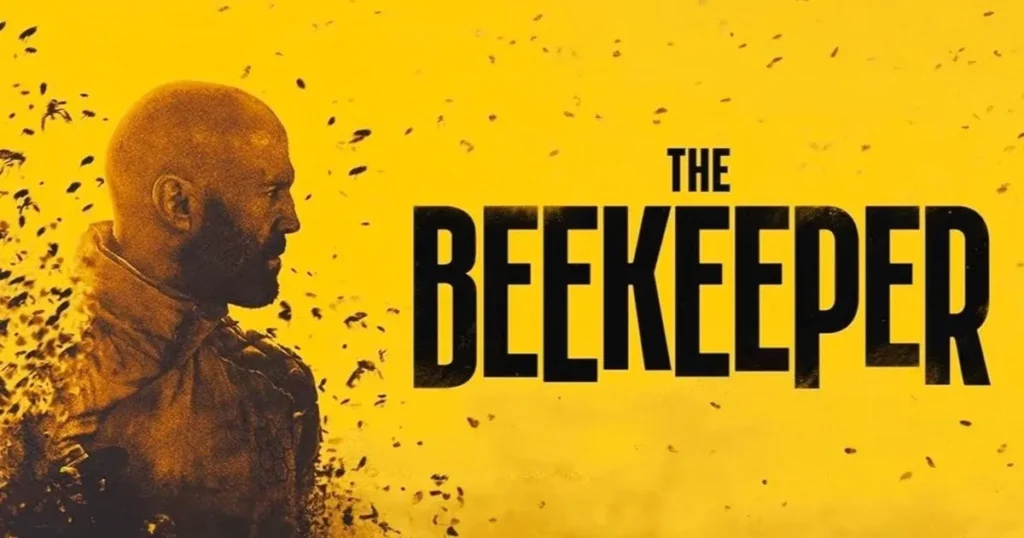

Similar threads